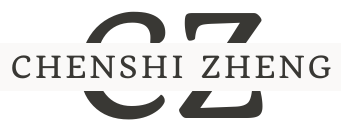In a world where policies can change faster than a cat video goes viral, understanding policy trend analysis is more crucial than ever. It’s like having a crystal ball that reveals the future of governance, economics, and social issues. But instead of seeing your ex’s face, you’ll spot emerging patterns that can shape decision-making and influence strategies.
Table of Contents
ToggleUnderstanding Policy Trend Analysis
Policy trend analysis serves as a vital tool for navigating an ever-evolving landscape of governance, economics, and social issues. This analysis reveals insights into prevailing patterns and potential future outcomes, allowing policymakers to craft informed strategies.
Definition and Importance
Policy trend analysis focuses on examining historical data, legislation, and social movements to identify emerging patterns in public policy. Understanding these trends fosters a proactive approach to decision-making. Policymakers gain clarity on potential impacts, leading to more effective governance. This process sharpens the ability to anticipate changes, enhancing the capacity to address emerging challenges.
Key Components of Analysis
Several key components constitute effective policy trend analysis. Data collection forms the foundation, involving quantitative and qualitative data that reflect diverse perspectives. Another essential element includes trend identification, where analysts sift through information to pinpoint patterns and anomalies. Stakeholder engagement also plays a crucial role, ensuring voices from various sectors contribute to the analysis. Contextual evaluation further enriches understanding, providing insight into the broader social, economic, and political environments influencing policies. Combining these components leads to a comprehensive analysis, paving the way for strategic decision-making.
Methodologies for Policy Trend Analysis

Policy trend analysis employs various methodologies to derive insights about future governance, economic, and social developments. This approach relies on both qualitative and quantitative techniques, ensuring comprehensive coverage of key issues.
Qualitative vs. Quantitative Approaches
Qualitative approaches explore subjective data such as interviews, focus groups, and open-ended surveys. This method captures nuanced perspectives and helps understand stakeholders’ motivations. Quantitative approaches, however, involve statistical analysis of numerical data, which provides measurable trends and patterns. Aggregating large datasets enables analysts to draw conclusions based on numerical evidence. Both approaches complement each other, combining rich narrative context with robust data analysis.
Data Collection Techniques
Data collection techniques play a crucial role in policy trend analysis. Surveys gather primary data from stakeholders, yielding insights into opinions and behaviors. Existing literature reviews highlight past studies and results, providing a foundation for current analysis. Social media monitoring tracks discussions around specific policies, revealing public sentiment. Additionally, governmental and organizational reports offer valuable statistical data. Utilizing a combination of these techniques enhances the accuracy and depth of the analysis.
Applications of Policy Trend Analysis
Policy trend analysis serves critical functions across various sectors. It enhances understanding, informing decision processes for governments and businesses alike.
Governmental Decision-Making
Governments leverage policy trend analysis to navigate complex challenges. Analyzing historical data assists in recognizing patterns in legislation and public response. Policymakers identify emerging trends, aiding in the development of responsive policies. Utilizing stakeholder engagement fosters a deeper comprehension of public sentiment and needs. Contextual evaluations of socio-economic factors enable governments to anticipate future developments, leading to proactive initiatives. By integrating qualitative and quantitative data, decision-making becomes more strategic, aligning with contemporary issues and public expectations.
Corporate Strategy Development
For businesses, policy trend analysis shapes corporate strategies significantly. Organizations assess legislative changes and social movements to adapt business models effectively. Tracking industry trends allows companies to identify potential opportunities and threats. Stakeholder feedback informs product development and marketing strategies, ensuring alignment with market demands. Data-driven insights support competitive analysis, resulting in informed investment decisions. By understanding regulatory environments, businesses align their operations with compliance requirements, minimizing risks and enhancing sustainability in dynamic markets.
Challenges in Policy Trend Analysis
Policy trend analysis faces several challenges that can impact the accuracy and effectiveness of its insights.
Data Limitations
Data limitations often hinder effective policy trend analysis. Incomplete datasets can obscure significant trends, preventing accurate forecasts. Additionally, outdated information may lead to misguided decisions. Analysts frequently rely on available sources, which may not represent the full picture. The reliance on secondary data from previous studies can introduce discrepancies, as researchers may interpret data differently. Ensuring comprehensive collection and timely updates remains vital for reliable insights in this field. Acknowledging these limitations leads to more cautious interpretations, allowing policymakers to navigate uncertainties more effectively.
Analytical Bias
Analytical bias poses another critical challenge in policy trend analysis. Researchers’ perspectives can skew findings, influencing interpretations of data trends. Individual biases might lead to overemphasizing certain data points while neglecting others. The choice of methodology can also introduce bias; selecting qualitative or quantitative approaches affects the conclusions drawn. Stakeholder expectations may further influence analysts, pushing them toward desired outcomes instead of objective interpretations. To mitigate these biases, employing diverse teams and cross-verifying results enhances the credibility of the analysis. Balanced perspectives contribute to a more comprehensive understanding of policy trends.
Future Directions in Policy Trend Analysis
Future directions in policy trend analysis revolve around leveraging cutting-edge methodologies and insights. Analysts must adapt to the shifting landscape to enhance their effectiveness and relevance.
Emerging Technologies
Emerging technologies play a crucial role in shaping policy trend analysis. Artificial intelligence enhances data processing capabilities, allowing for faster and more precise insights. Machine learning algorithms can identify hidden patterns within large datasets, improving trend identification. Blockchain technology ensures transparency in data sharing, enhancing trust among stakeholders. Additionally, data visualization tools enable clearer communication of complex findings, making information accessible to decision-makers. As technology evolves, policy analysts must integrate these tools to refine their approaches and increase efficiency.
Interdisciplinary Approaches
Interdisciplinary approaches represent a vital trend in policy trend analysis. Combining expertise from various fields enriches the analytical process. Collaboration between social scientists, economists, and technologists provides diverse perspectives that contribute to more robust insights. This integration helps identify correlations among historical events, legislation, and socio-economic factors. Engaging with experts in behavioral science enhances understanding of public response to policy changes. By fostering collaboration across disciplines, analysts produce more comprehensive analyses that can better inform decision-making.
Conclusion
Policy trend analysis serves as an essential tool for navigating the complexities of modern governance and business. By leveraging both qualitative and quantitative methodologies, analysts can uncover valuable insights that drive informed decision-making. The integration of emerging technologies and interdisciplinary collaboration further enhances the accuracy and depth of these analyses.
Addressing challenges such as data limitations and analytical bias is crucial for achieving reliable outcomes. As the landscape continues to evolve, staying ahead of trends will empower policymakers and businesses alike to respond proactively to emerging challenges. Ultimately, embracing a comprehensive approach to policy trend analysis fosters a more sustainable and adaptive environment in an ever-changing world.




